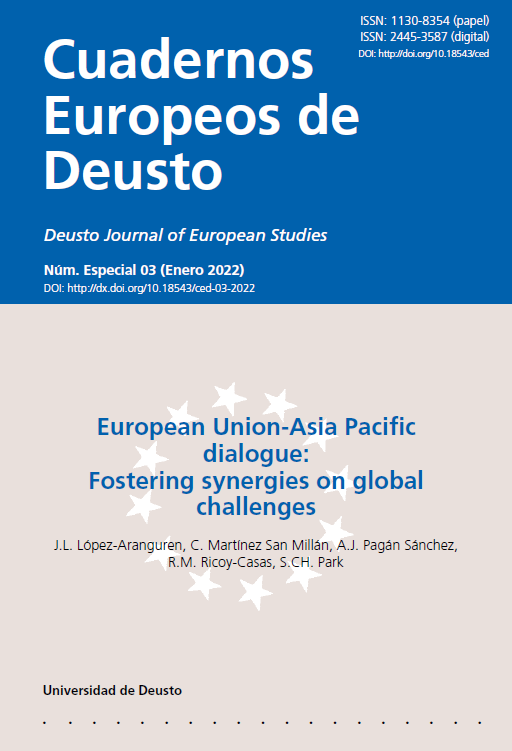The EU’s strategic projection in the Indo-Pacific
Abstract
The Indo-Pacific is becoming the new geopolitical axis of the planet for multiple reasons, among which three stand out: security (with six nuclear powers in the area, some of them amidst clearly growing tensions), demography (with 64 percent of the world population) and economy (with 62 percent of world GDP). Since its founding, the European Union has been absent in the development of a strategy for the region, an absence that has recently ended with the publication of national strategies of three member states (France, Germany, and the Netherlands), as well such as the EU announcement of a future EU strategy for the region. This paradigm shift may mark the beginning not only of greater European cohesion in terms of strategic projection, but also of greater European geopolitical assertiveness in a post-COVID-19 world in the Indo-Pacific and other regions. This article will trace the birth and evolution of the Indo-Pacific concept, will identify the reasons for its geostrategic importance for the European Union, and will analyze both the three national strategies of France, Germany, and the Netherlands as well as the announced EU strategy for the region.
Received: 01 September 2021
Accepted: 05 November 2021
Downloads
The author grants to the Publisher the distribution, public communication, and reproduction rights of her/his work subject of publication in Deusto Journal of European Studies (DJES), whichever the media may be, including the permission to include it in the databases where this Journal is indexed and in the institutional repository of the Universidad de Deusto.
Upon its publication, the content of any Issue of Deusto Journal of European Studies (DJES) can be accessed, read, downloaded, copies, and distributed freely for non-commercial purposes and in accordance with any applicable copyright legislation.
The content of Deusto Journal of European Studies (DJES) can be subsequently published in other media or journals, as long as the author clearly indicates in the first footnote that the work was published in Deusto Journal of European Studies (DJES) for the first time, indicating the Issue number, year, pages, and DOI (if applicable). Any other use of its content in any medium or format, now known or developed in the future, requires prior written permission of the copyright holder.
The content of the work published in Deusto Journal of European Studies (DJES) is each author's sole responsibility. The authors assume the responsibility of obtaining all the necessary licenses for the reproduction in their manuscripts of any text, material or illustration coming from another author, institution or publication. The liabilities that may arise from complaints for publishing plagiarised articles are the sole responsibility of the author.


3.jpg)
2.jpg)
2.jpg)
2.jpg)
2.jpg)
2.jpg)







